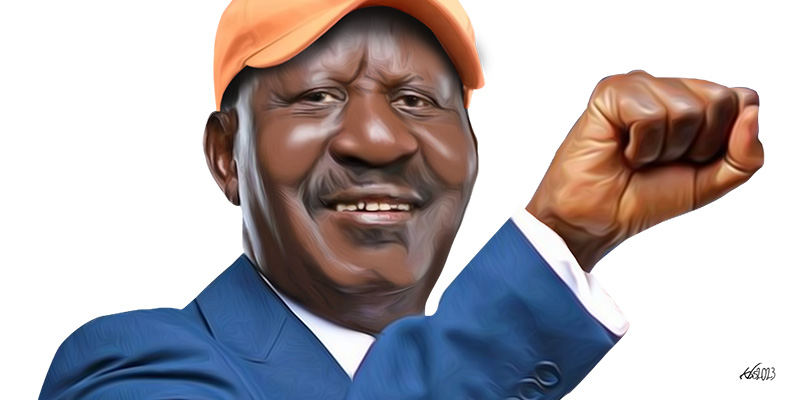Kenya’s President William Ruto, in a speech on Sunday, April 2, extended an olive branch to the opposition and urged them to hold off the following day’s “mother of all demonstrations” in Nairobi. Immediately, opposition leader Raila Odinga communicated in a speech that they would not hold demonstrations and heeded the government’s call for negotiations and talks within a constitutional framework.
For the previous three weeks, large demonstrations, sporadic protests, chaos, mayhem, lootings, police tear gas, and water cannons were familiar sights for the denizens of Nairobi, Kenya’s capital city and East Africa’s economic hub. This comes after Odinga, a former prime minister, and Kenya’s perennial opposition leader called for demonstrations on the rising cost of living, electoral malpractices during last year’s poll, and against the “illegitimate” and dysfunctional government of President Willian Ruto.
As a nation with a history of bloody post-election violence, Kenya risks descending into unprecedented political turmoil as the opposition remains steadfast in holding twice-weekly demonstrations. Already the violent counter-demonstrations and events, such as the burning of a mosque and a church in Kibera, the looting and vandalism of property belonging to former president Uhuru Kenyatta and Odinga, and police violence against journalists—all fanned by an atmosphere imbued with dangerous rhetoric and chest-thumping political discourses—raise serious concerns for the country.
Why is Kenya facing a political crisis again, seven months after a highly contested election process? Understanding the demonstrations requires a grasp of the political discourse of the election campaigns of August 2022. When then-president Uhuru Kenyatta politically side-lined his deputy William Ruto, endorsing and campaigning instead for the opposition candidate Odinga, a seismic shift occurred in the Kenyan political landscape. How could a president support the opposition candidate against his own party candidate? It was a first in Kenya.
However, this played into Ruto’s hands. As the elections approached, the economy hit rock bottom, inflation skyrocketed, and Kenya witnessed its highest rate of youth unemployment. I was conducting ethnographic fieldwork in Nairobi as a Ph.D. student at the time, and the frustration with the Kenyatta government was palpable. When Kenyatta left office he was so unpopular that his own political constituency voted en masse for Ruto.
More significantly, the elections of 2022 will be remembered for their “dynasties” and “hustlers” narratives. The then embattled Ruto successfully framed the elections as a contest of the haves and the have-nots—a class war between the poor masses and the detached super-rich. Ruto embellished himself as the candidate of the poor, a man who walked to school barefoot as a child and sold chicken on the roadside. His life story resonated with the majority of Kenyans. He claimed to be a simple hustler who was being sabotaged by the political dynasties of Kenyatta and Odinga—two scions of Kenya’s founding fathers.
In the end, Ruto won the elections by a slim margin; he had beaten the odds. The elections of 2022 were a “rebellion” of the poor against Kenya’s entrenched political dynasties and the culture of political bequeathing rampant amongst the elites. Moreover, the election results were contested in the Supreme Court which later upheld Ruto’s victory.
President Ruto came to power with the economy in tatters. In the run-up to the elections, he promised to reduce the cost of living immediately after taking power. Ironically, the government cut vital subsidies on fuel and other basic commodities worsening the country’s inflation. Fuel, which powers Kenya’s vibrant service industry and the private sector, increased exponentially. Today, the majority of Kenyans face increasing prices of fuel and electricity, and other basic commodities, such as maize flour, milk, water, and vegetables.
The current demonstrations are centered around this spiraling cost of living in Kenya. Moreover, droughts have wreaked havoc in the northern parts of the country where millions face starvation. More critically, the government is also facing unraveling security issues in the Northern Rift Valley region where bandits are terrorizing pastoralists with impunity.
President Ruto over-communicated and over-promised change and an abrupt economic transformation to the electorate. Seven months into his government the people have grown impatient and the opposition is capitalizing on this.
More importantly, since coming to power, the ruling United Democratic Alliance (UDA) has been on course to establish absolute hegemony in the political arena. To the chagrin of the opposition, many of its members have defected to the ruling party, which effectively makes parliament an organ of the executive. Moreover, the government has begun restructuring the independent election commission, despite the opposition shunning the process as one-sided.
Kenya’s opposition is politically cornered and battered. Gasping for political oxygen it has no option but to call for mass demonstrations. Odinga, the man Kenyans call Baba, is a veteran orchestrator of mass actions in Kenyan politics. Despite being in the opposition, when he speaks the political ground shakes. After five decades in opposition politics and losing five presidential elections, Odinga knows when the ground is fertile for mass action. Nevertheless, the recent rapprochement between the government and the opposition has eased anxieties in the country.
Kenya evaded the “mother of all demonstrations,” but only by a whisker.
–
This post is from a partnership between Africa Is a Country and The Elephant. We will be publishing a series of posts from their site once a week.








